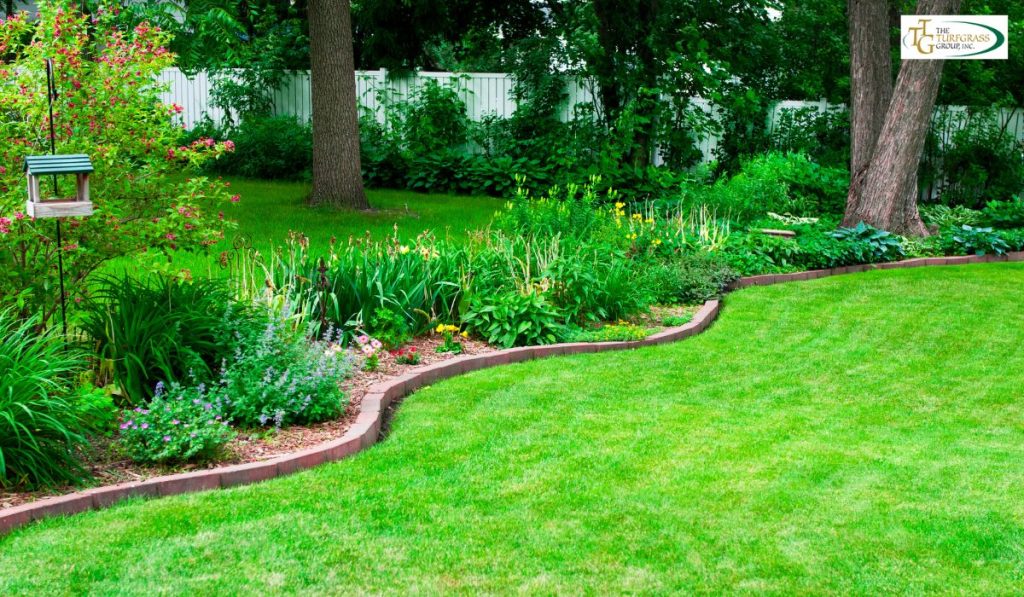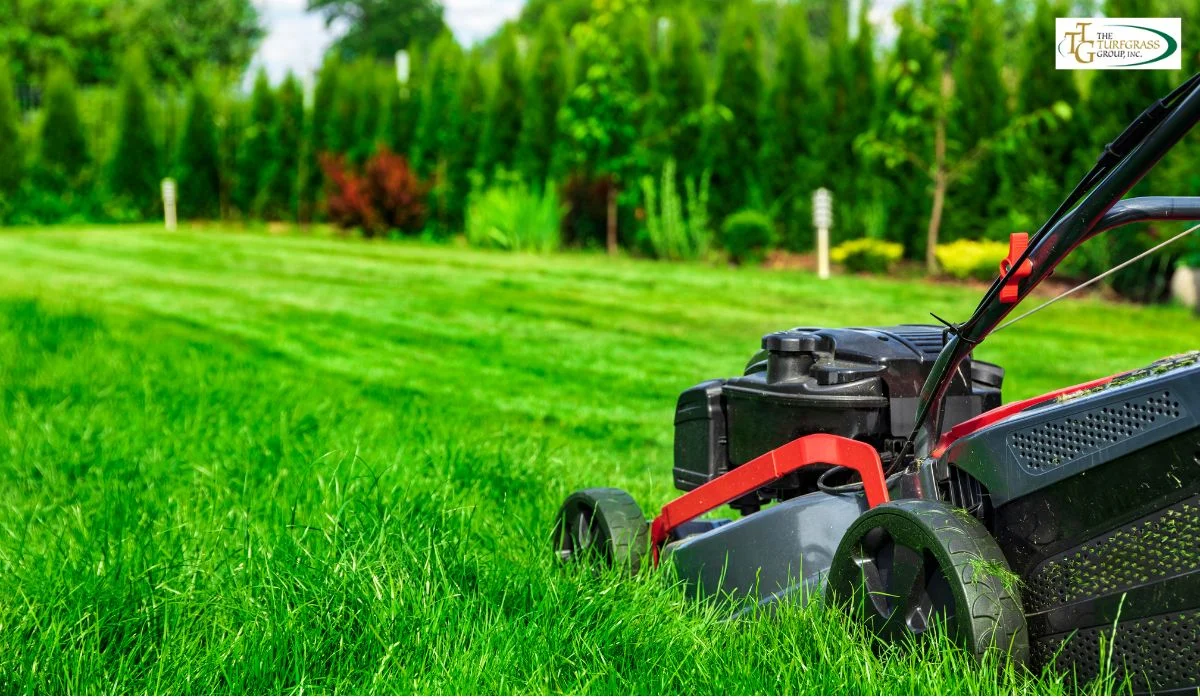
Imagine stepping onto a lush, velvety carpet of green that feels as good underfoot as it looks to the eye.
That’s the magic of Zoysiagrass.
This remarkable grass variety is not only easy on the eyes but also incredibly resilient, making it an excellent choice for lawns in various climates.
With its thick growth and deep roots, Zoysiagrass stands strong against drought and foot traffic alike.
Whether you’re looking to enhance your home’s curb appeal or create a comfortable outdoor space for family gatherings, Zoysiagrass can transform any yard into a stunning oasis.
But what exactly makes this grass so unique?
From its adaptability to nutrient retention capabilities, Zoysiagrass has earned its place among homeowners’ favorites.
Dive into the world of Zeon Zoysia and discover why it’s time to rethink your lawn choices!
Understanding the Different Types of Zoysiagrass
Zoysiagrass is a popular choice for lawns due to its durability and lush appearance.
However, not all Zoysia Grass types are created equal.
Zeon Zoysia stands out with its delicate texture and vibrant color.
It forms a dense mat that resists weeds while providing a soft surface underfoot.
Emerald Zoysia is another favorite, known for its rich green hue.
This variety offers excellent shade tolerance, making it suitable for areas with limited sunlight.
If you’re looking for a rapid establishment, consider Meyer Zoysia.
Its quick growth makes it an ideal option for new lawns or patching existing ones.
There’s Compadre Zoysia, which thrives in warmer climates.
It has exceptional drought resistance and can endure high-traffic areas without losing its appealing look.
Choosing the right type depends on your specific lawn conditions and aesthetic goals.
Each variety brings unique advantages to enhance your outdoor space.
Climate and Soil Requirements for Zoysiagrass
Zoysia Grass thrives in warm climates, making it a popular choice across the southern United States.
It flourishes best when temperatures consistently range between 75°F and 100°F.
Soil quality plays a crucial role in its growth.
Zoysiagrass prefers well-draining soils with good organic matter content.
A pH level between 6.0 and 7.0 is ideal for optimal nutrient absorption.
One of its standout features is drought tolerance, but establishing healthy roots requires adequate moisture during the initial growth phase.
While it can adapt to various soil types, sandy or loamy soils yield the best results for this resilient grass type.
Regular aeration helps improve drainage and root development over time.
Ensuring these conditions are met will pave the way for vibrant green lawns that stand firm against environmental stresses.
Proper Maintenance and Care for a Healthy Lawn

Maintaining a healthy lawn with Zoysia Grass requires consistent care.
Regular mowing is critical.
Keep your mower blades sharp to promote clean cuts, preventing stress on the grass.
Watering should be done sincerely and infrequently.
Aim for about one inch per week, adjusting based on rainfall and temperature changes.
Early morning is the best time to water, reducing evaporation.
Fertilization plays a significant role in promoting vibrant growth.
Use a balanced fertilizer during the growing season to provide essential nutrients.
Aeration can enhance root development by improving soil air circulation.
This practice alleviates compacted soil and encourages deeper roots.
Weed control is vital, too; correctly identifying weeds allows you to tackle them effectively without harming your Zoysiagrass.
Consider natural herbicides or manual removal methods when possible for an eco-friendly approach.
Pay attention to any signs of distress in your lawn, including color changes or thinning areas, so that you can address potential issues promptly.
Dealing with Common Pest and Disease Problems
Zoysiagrass is generally resilient, but it can still face challenges from pests and diseases.
Recognizing the signs early is critical to maintaining a healthy lawn.
Grubs are common culprits that feed on grassroots.
If you notice brown patches, check for these pests by digging up a small section of turf.
Treatment options include beneficial nematodes or insecticides specifically designed for grubs.
Fungal issues like brown patches may arise in humid conditions.
Ensure proper air circulation and avoid overwatering to help prevent this problem.
Fungicides can be effective if applied at the first sign of disease.
Another pest to watch out for is chinch bugs, which suck moisture from grass blades.
An easy test involves placing a coffee can cut in half into the soil, filling it with water, and seeing if any bugs float to the surface.
Regularly monitoring your lawn allows you to act quickly before problems escalate.
Tips for Establishing a New Zoysia Grass Lawn
Establishing a new Zoysia Grass lawn can be an exciting project.
Start by choosing the right time of year, ideally late spring or early summer when temperatures are warm.
Prepare your soil well.
Test for pH and nutrient levels to ensure optimal growth conditions.
Aerate compacted areas to promote root development.
When planting, consider using sod or seed based on your preference and budget.
Sod provides instant coverage, while seeds take longer but are often more economical.
Water regularly after installation, keeping the soil consistently moist until the grass is established.
Avoid overwatering; Zoysiagrass prefers moderate moisture.
Give it some time to acclimate before mowing.
This allows roots to be adequately established without stress from cutting too soon.
A healthy start sets the stage for a lush lawn that thrives in its environment.
Why Zoysiagrass is the Perfect Choice for a Lush, Green, and Resilient Lawn
Zoysiagrass stands out as an exceptional choice for homeowners seeking a vibrant lawn.
Its dense growth habit creates a lush carpet of green that feels luxurious underfoot.
This grass type thrives in various climates, making it adaptable and versatile.
Whether you live in the scorching heat or experience mild winters, Zoysiagrass maintains its beauty year-round but Zoysiagrass needs some extra care in winter.
Its drought-resistant nature means less frequent watering compared to other grass types.
This resilience translates into lower maintenance efforts while still delivering stunning results.
Moreover, Zoysiagrass is tough against foot traffic.
Families with active kids or pets will appreciate how well it holds up against wear and tear.
Pest resistance further enhances its appeal, requiring fewer chemicals for upkeep.
With so many benefits packed into one variety, it’s clear why many choose Zeon Zoysia for their lawns—creating outdoor spaces that are both beautiful and practical.
Conclusion
Creating a lush, green, and resilient lawn is within reach with Zeon Zoysia.
This hardy grass variety not only enhances the aesthetic appeal of your outdoor space but also withstands various environmental stresses.
With its dense growth habit, it provides excellent foot traffic tolerance while requiring less water compared to traditional grasses.
Understanding its different types helps you choose the right fit for your specific climate and soil type.
Proper maintenance ensures that your Zoysiagrass remains healthy throughout the seasons.
Being proactive about pest management can further protect this beautiful turf from joint issues.
Establishing a new Zoysia Grass lawn might seem like a daunting task at first, but with the right tips and techniques, it becomes easier than expected.
As you nurture your Zeon Zoysia lawn into maturity, you’ll enjoy the benefits of reduced care requirements and increased durability.
Choosing Zeon Zoysia means opting for a sustainable solution that combines beauty with resilience in every blade of grass.
FAQs
What is Zeon Zoysia?
Zeon Zoysia is a fine-textured grass variety known for its vibrant green color and dense growth, making it an ideal choice for lawns.
How often should I water my Zeon Zoysia lawn?
Water your Zeon Zoysia lawn about once a week, ensuring it receives approximately one inch of moisture, adjusting for rainfall and temperature changes.
Is Zeon Zoysia resistant to pests?
Yes, Zeon Zoysia has natural pest resistance, requiring fewer chemicals for maintenance compared to other grass types.